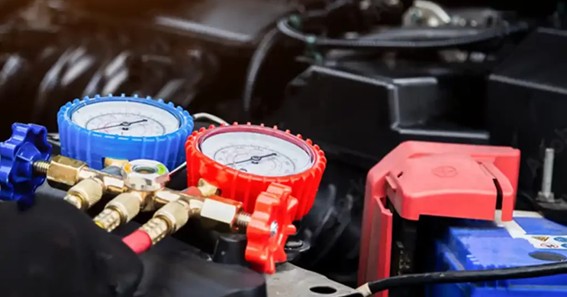Maintaining a vehicle’s air conditioning system is crucial for comfort and efficiency, especially in warmer climates. A key component in this maintenance is the car AC vacuum pump, which plays a vital role in removing air and moisture from the AC system before recharging it with refrigerant. Understanding how these pumps work and selecting the right one can make a significant difference in the longevity and performance of your vehicle’s AC system.
Why Use a Car AC Vacuum Pump?
Before recharging an AC system, it’s essential to evacuate any air and moisture to prevent corrosion, reduce wear, and ensure efficient cooling. A vacuum pump achieves this by creating a vacuum that removes contaminants, allowing for a clean environment for the new refrigerant. This process not only enhances cooling performance but also extends the life of the AC components.
Top Car AC Vacuum Pumps in 2025
When choosing a car AC vacuum pump, consider factors like capacity (measured in CFM), stage (single or dual), and compatibility with refrigerants. Here are some top models available in 2025:
1. Robinair 15500 VacuMaster Economy Vacuum Pump
- Type: Two-stage rotary vane
- CFM: 5.0
- Features: High-efficiency design, easy maintenance, and durable construction.
2. XtremepowerUS 3CFM 1/4HP Air Vacuum Pump
- Type: Single-stage
- CFM: 3.0
- Features: Lightweight, portable, and ideal for small-scale applications.
3. Kozyvacu TA350 Single-Stage Rotary Vane Vacuum Pump
- Type: Single-stage
- CFM: 3.5
- Features: Thermal protection, low noise, and high efficiency.
4. FJC 6912 Vacuum Pump
- Type: Single-stage
- CFM: 5.0
- Features: Heavy-duty motor, easy oil fill port, and accessible oil drain.
5. Zeny 3.5CFM Single-Stage Rotary Vane Vacuum Pump
- Type: Single-stage
- CFM: 3.5
- Features: Aluminum alloy casing, shockproof base, and efficient cooling.
How to Use a Car AC Vacuum Pump
Using a vacuum pump involves several steps:
- Preparation: Ensure the AC system is off and connect the manifold gauge set to the service ports.
- Connection: Attach the vacuum pump to the center hose of the manifold gauge set.
- Evacuation: Turn on the pump and open the valves to start the evacuation process.
- Monitoring: Let the pump run for 30-60 minutes, monitoring the gauges for proper vacuum levels.
- Leak Check: After turning off the pump, observe the gauges to ensure the system holds the vacuum, indicating no leaks.
- Recharging: Once confirmed, proceed to recharge the system with the appropriate refrigerant.
FAQ
1. What is the difference between single-stage and two-stage vacuum pumps?
Single-stage pumps have one rotor and are suitable for general purposes, while two-stage pumps have two rotors, providing a deeper vacuum and are ideal for professional applications.
2. How often should I use a vacuum pump on my car’s AC system?
It’s recommended to use a vacuum pump whenever the AC system is opened for repairs or component replacements to ensure all air and moisture are removed before recharging.
3. Can I use the same vacuum pump for different refrigerants?
Some vacuum pumps are compatible with multiple refrigerants, but it’s essential to check the manufacturer’s specifications to avoid cross-contamination.
4. What CFM rating should I look for in a vacuum pump for my car?
A pump with a CFM rating between 3.0 and 5.0 is typically sufficient for most automotive AC systems.
5. Is it necessary to change the oil in a vacuum pump?
Yes, regular oil changes are crucial for maintaining the pump’s efficiency and longevity. Refer to the manufacturer’s guidelines for specific intervals.
Investing in a reliable car AC vacuum pump is essential for maintaining your vehicle’s air conditioning system. By understanding their function and proper usage, you can ensure a comfortable driving experience and prolong the life of your AC components.










